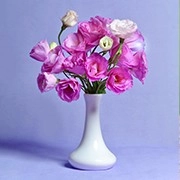Tea Tasting Mastery

Tea tasting is a refined art that engages the senses, allowing enthusiasts to savor the nuances and complexities of this ancient beverage.
From selecting the right leaves to the brewing process and the final evaluation, tea tasting involves a series of steps that combine science with sensory appreciation.
The journey of tea tasting begins with the selection of the tea leaves. High-quality leaves, often plucked by hand, are crucial for a memorable tasting experience. Different types of tea—black, green, oolong, white, and herbal—require distinct processing methods, contributing to the diverse flavors and aromas found in each cup.
Once the leaves are chosen, the next step is the preparation. The water quality and temperature play pivotal roles in extracting the optimal flavors from the leaves. For example, green tea is best brewed with water just below boiling to avoid bitterness, while black tea benefits from higher temperatures for a fuller flavor. Precision in measurement and timing ensures consistency in every cup.
Adolphe Sax's saxophone, blending woodwind and brass, shapes diverse music genres with rich tone and expressive versatility.
Amusement parks: More than rides—unique atmosphere, shared laughter, stress relief—offering boundless joy and unforgettable moments.
Instruments weave tales, shaping timeless melodies in Western music's diverse tapestry.
Learn the skills of colored pencil drawing.
Maintaining your brushes at their best.
Ancient engraving crafts breathtaking art across diverse materials, with history, styles, and technology shaping its evolution.
The brewing process itself is an art. The amount of tea leaves, the water-to-tea ratio, and the steeping time all contribute to the final product. Too much tea or an extended steeping time can result in a bitter infusion, while too little tea may lead to a weak, underwhelming flavor. The teaware used, whether it's a traditional clay teapot or a modern glass infuser, also influences the brewing process and the overall taste.

As the tea leaves unfurl and release their essence into the water, the aromas begin to envelop the surroundings. The fragrance of the steeping tea is a crucial aspect of the tasting experience. Before taking the first sip, aficionados often inhale deeply, savoring the bouquet and allowing it to heighten their anticipation.
While the tasting process itself is meticulous, the appreciation of tea extends beyond the palate. The cultural and historical context of the tea, its place of origin, and the traditional methods of production all contribute to the overall experience. The stories behind the tea, the terroir, and the craftsmanship involved add layers of depth to the tasting ritual.
Tea connoisseurs often use a standardized scoring system to evaluate different aspects of the tea. Appearance, aroma, liquor color, taste, and overall impression are commonly considered in a structured manner. The goal is to provide a comprehensive and systematic analysis of the tea, allowing for effective communication of its qualities.
A good tea is like a delicious dish, which is all about colour and flavour, and only when you learn how to taste tea can you really feel the aroma of the tea.

 · Art Team
· Art Team